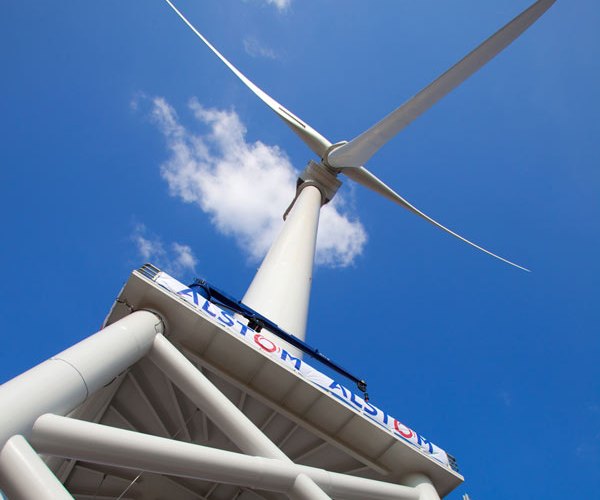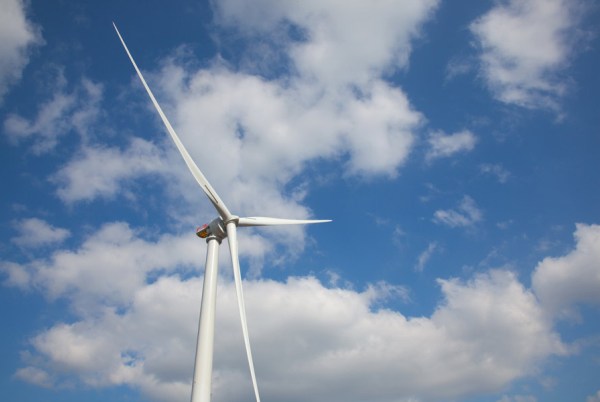When France declared its renewable energy target for 23 percent by 2020, a number of wheels (or turbines if you will) began turning to make that happen. In 2011, French President Nicolas Sarkozy announced that France would be spending over $13.5 billion in offshore wind farms in Northern France. As one would imagine, a number of companies jumped at the call for tenders, including a consortium led by EDF Energies Nouvelles and using Alstom as the turbine manufacturer. Their approach seems to fall under the “go big or go home” mentality, as they focus efforts on the “next generation” of turbines, which translates into much, much bigger.
We’re now starting to see the fruit of that investment as Alstom plants its massive 6 megawatt Haliade 150 offshore wind turbine into the ground for testing at Carnet in the Loire-Atlantique. Obviously an offshore wind turbine put on dry land seems counter-intuitive, but the location was carefully chosen to easily collect data in an area with geological characteristics similar to the eventual submarine environment.

The initial turbine will undergo a series of year-long tests which require lots of measurements and manipulations which are much easier to conduct onshore. The objective is to analyze the turbine’s power curve to see its capacity for producing electricity efficiently, as well as to test all the individual systems, including the electrical equipment, generator, software, and mechanical components.
If all goes well, offshore testing will begin this fall, where performance and maintenance will be further tested under actual operating conditions. To facilitate easy access, the central block of the turbine comes with a helipad so workers can quickly hop on over in a helicopter.
While there are some recently developed turbine giants for onshore wind, Alstom’s turbine lays claim to the largest offshore wind turbine in the world (although technically not yet in the water). The largest motivator to build a bigger turbine is that it helps reduce the high cost of offshore wind power. Since the actual turbine and infrastructure cost is just incremental the larger the turbine gets, the drastic difference in output could bring the energy cost down quite a bit.

To give some context for this 6MW turbine’s size, the company’s onshore wind turbines currently in use have a capacity between 1.7 and 3 MW. Alstom’s 1,500 ton turbine has a sub-structure of 25 meters, with a tower of 75 meters on which the nacelle sits 100 meters above ground. According to Alstom, each turbine’s output could produce enough energy to power 5,000 households.
Not only does the 6MW turbine have the potential to contribute a large amount of renewable energy to France’s 23 percent by 2020, it also stands to infuse France with jobs. According to Alstom, if the project is successful they plan to build up to four factories to build and assemble components which would create a large number of related jobs.
To get a better scope on the size of this monster offshore wind turbine, check out the video from Alstom below. Minus the quirky music, it really is eye opening how big this clean energy generator will be.